Calero- a spend management platform that allows you to gain visibility into an organization's SaaS expenses, further enabling you to control, manage, and optimize SaaS spending. However, it has certain drawbacks, such as you have to pay additional charges for customizing features; thus, the need for an alternative arises.
So, in this blog, we'll discuss a few alternatives that you can consider opting for instead of Calero.
Calero allows IT admins to view SaaS expense-related data in one place, which helps get better visibility into monthly spending and both identified and realized savings. Furthermore, it analyzes the data and arranges them how you want to view them on the dashboard, such as recent expenses, which departments are overspending, and more. This will help in making informed decisions like where to minimize expenses.
Additionally, it automatically identifies unassigned licenses and notifies IT admins so that they can assign those licenses to new employees or get reimbursed, helping reduce the SaaS expenses.
Despite its benefits, Calero still lags behind in some ways and has its own set of drawbacks. Of all, one is that it's too pricey; you have to pay an additional cost for customization features. Another con is that it can take time to implement any changes, as reported by some users.
However, you need not limit yourself to one tool to manage SaaS spend; you can always opt for an alternative to avail of the full functionality. So, in this blog, we'll provide you with a list of alternative tools that can be more suitable than Calero for Spend management.
The Best Calero Alternatives
Below is the list of efficient tools that you can consider choosing as a substitute for Calero to streamline your SaaS management process.
1. Zluri
Zluri is an intelligent SaaS management platform that gives you a 360-degree view of all SaaS expenses. For instance, how much budget is allocated to each department for their operations, what is estimated spend vs actual spend, which cards are used for making payments- personal or corporate cards, and more. Getting such minute insights surely help you optimize your overall SaaS spend.
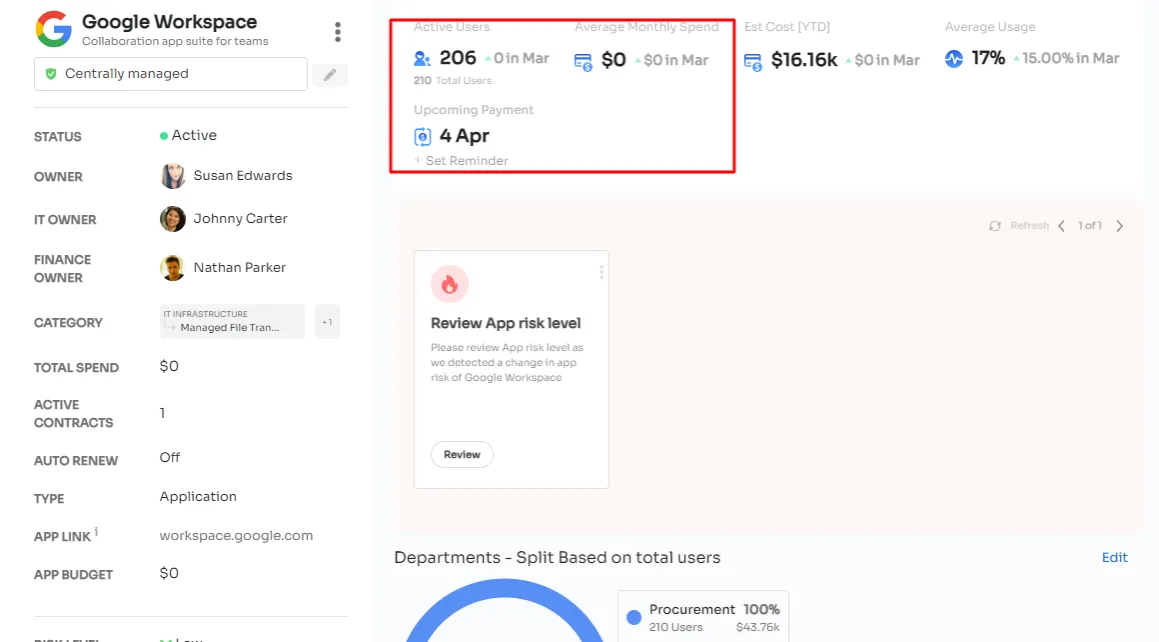
But how does Zluri do all this? It offers you five discovery methods, i.e. SSo and IDP, finance and expense management systems, direct integration, desktop agents (optional) and browser agents (optional).
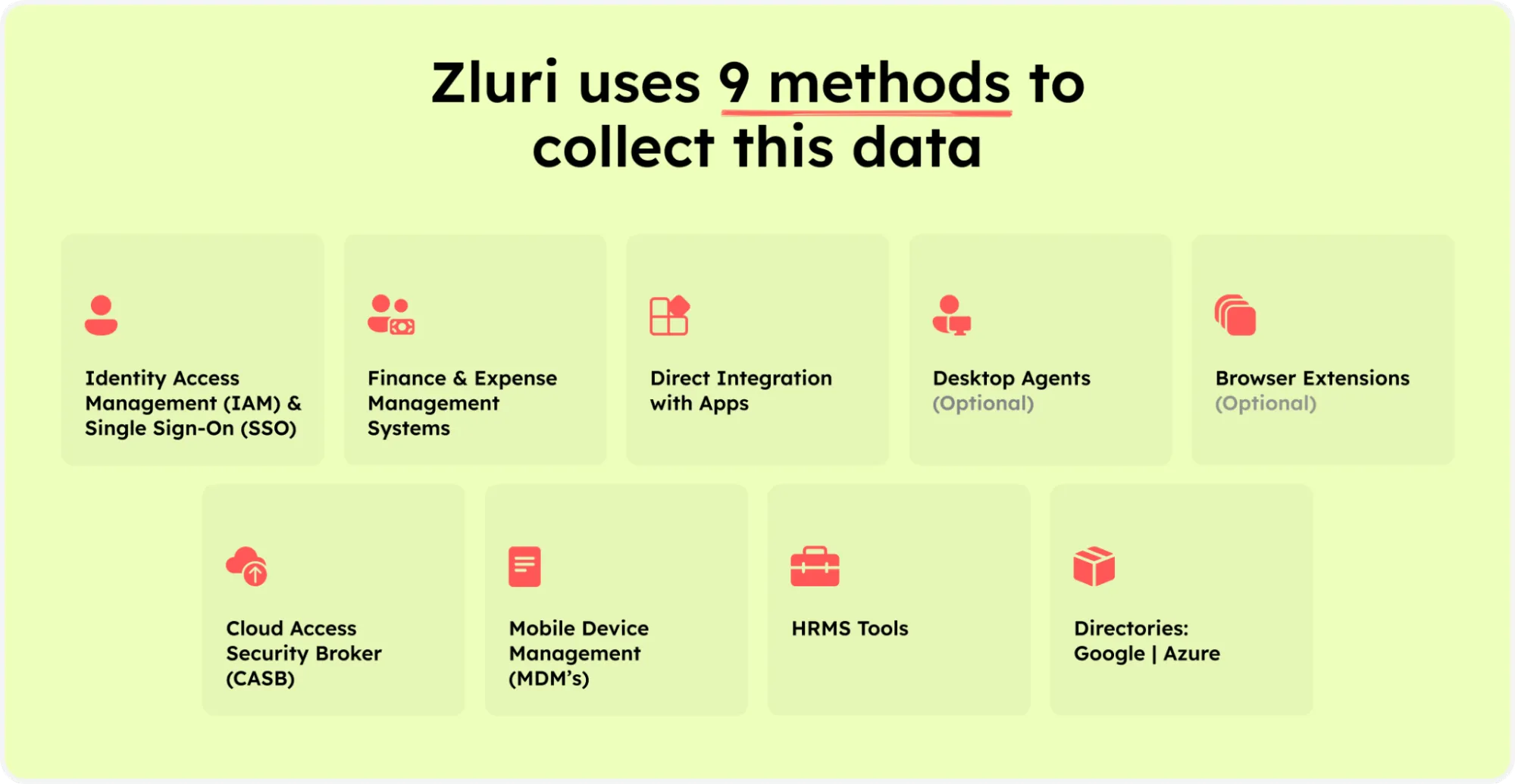
Zluri’s nine discovery methods
This allows you to discover all the SaaS applications present in the organizations, which helps in eliminating Shadow IT and also allows you to identify how many licenses are actually required so that you don't make needless purchases.
For instance, let's say you purchased 40 application licenses; but only 20 licenses are being used actively. So, you are paying unnecessarily for the 20 unused licenses. So in this situation, Zluri analyzes how many licenses are being used and how many are redundant, allowing you to make cost-effective decisions.
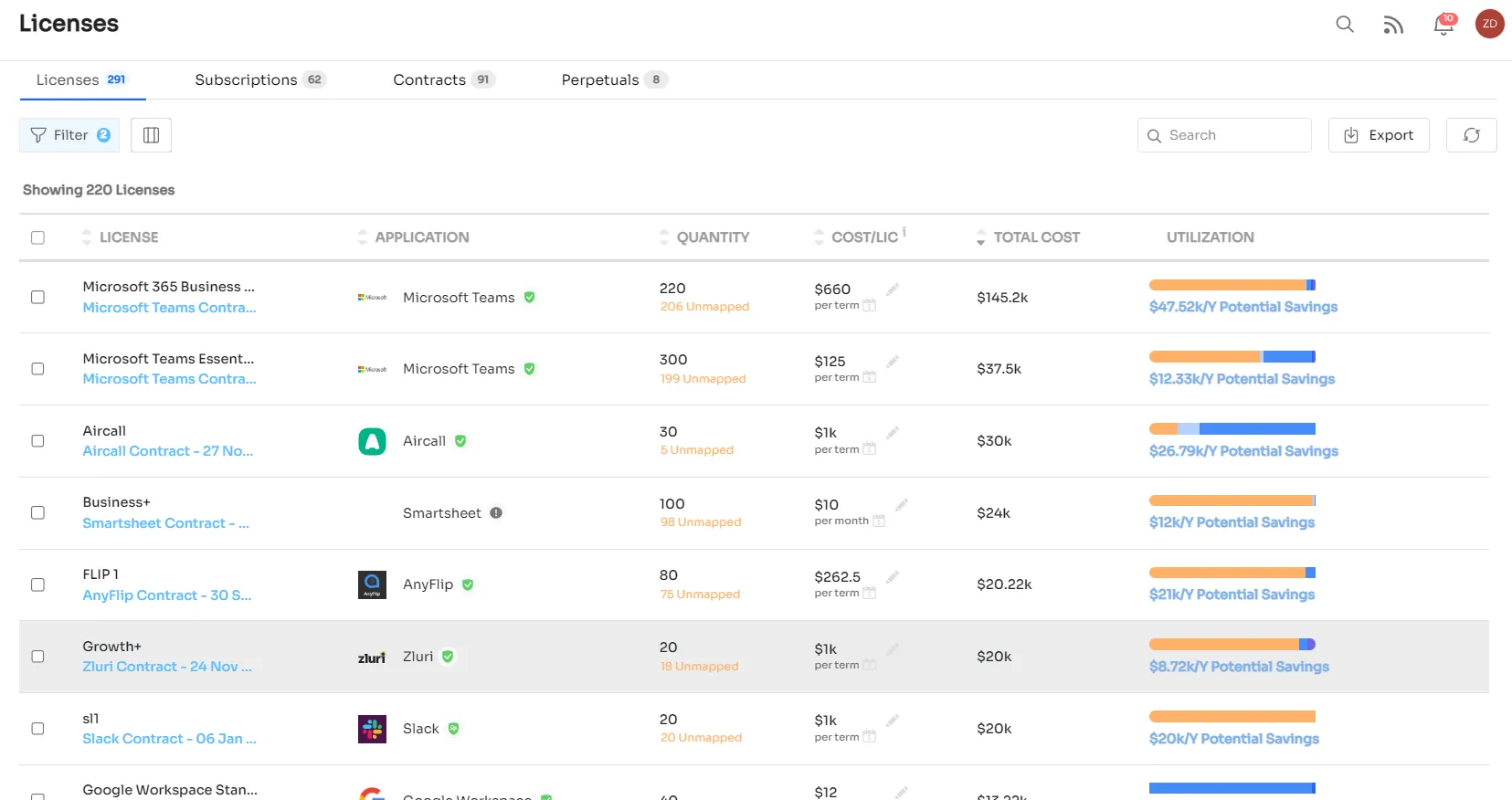
What about the right sizing to a suitable tier? For example, you are using limited features of an app but paying for its premium version when the Standard version can do the needful. So Zluri will navigate which features are used the most in an application, making it easier for you to shift to the tier that provides those features. Thus, you no longer have to pay for features that are not being used.
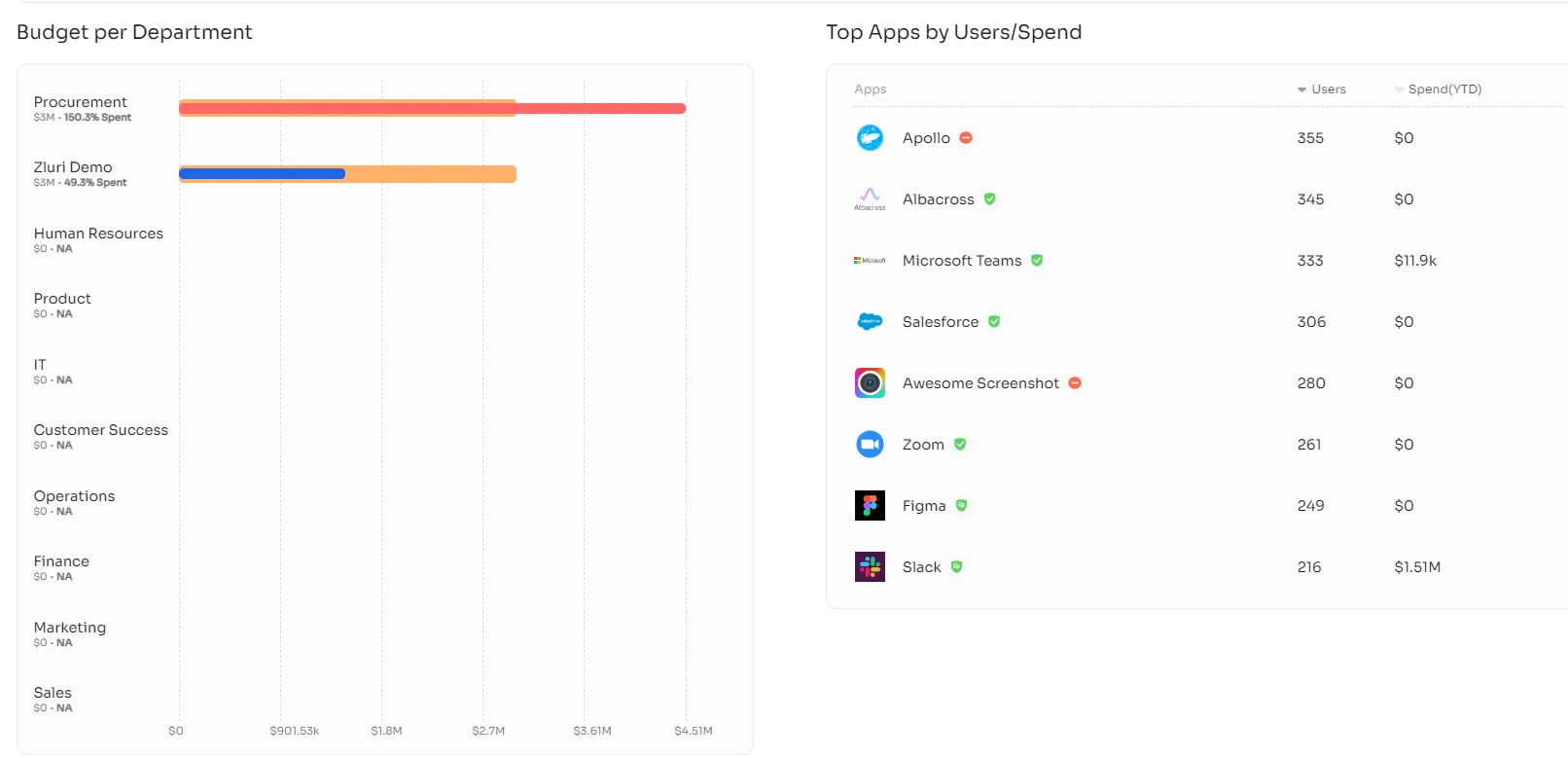
It doesn't stop here; before purchasing any SaaS applications, it helps you check whether the application meets the company's compliance requirements so that you don't end up paying hefty penalties for not meeting the compliance regulations.
Additionally, to monitor the entire SaaS management process, it conducts periodic audits and generates usage reports of applications that provide real-time insights on how many users are actively logging in and logging out.
Furthermore, as per Kuppingercole's research and analysis report, you can use these audits reports at the time of renewal, which helps you make efficient decisions on which app to continue with. Besides that, you get renewal updates automatically and can set the alerts as per your requirement to prioritize renewals which is crucial.
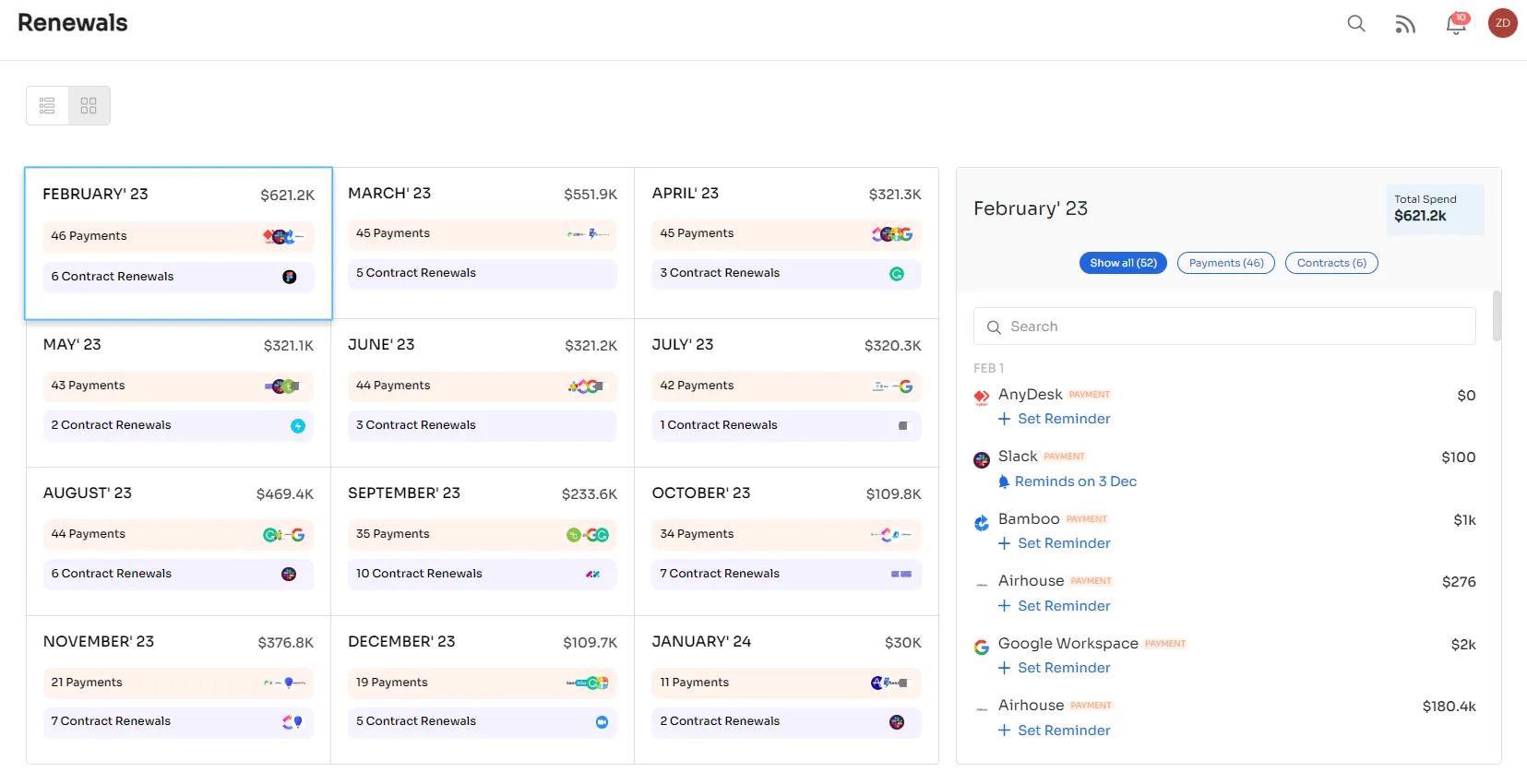
So what are you waiting for? Book a demo now and see how it helps your IT teams streamline the SaaS spend management process.
Pros
- Zluri alerts you on upcoming renewals so you can plan beforehand which license to continue with and which ones to terminate. This will help in reducing SaaS expenses
- It offers you SaaS buying capabilities, in which experts negotiate on your behalf and negotiate for the best offer, allowing you to optimize SaaS spend
Customer Rating
- G2: 4.8/5
- Capterra: 4.9/5
2. Torii

Torii offers a unified view of SaaS spend and allows IT admins to monitor, categorize, and track expenses in real time. Further ensures you only pay for what you require. How does it do that?
It analyses the app usage, adoption, and redundancies and accordingly helps you decide where to reduce the expenses; for example, it helps you shift to a suitable tier where you only pay for the required features.
Additionally, it brings managed and unmanaged spend in one place, allowing you to identify SaaS cost leakage. Also, Torii notifies IT admins on upcoming renewals so they can plan prior to which license to terminate and which one to continue with.
Pros
- Torii can discover apps that employees are signing up for, allowing IT admins to identify which apps are used frequently and which are not. This helps get rid of applications that are not needed and minimizes SaaS expense
- It conducts frequent audits and produces reports on the number and type of licences that are being used in the organization. Based on this information, you can maintain the required licences and the right size to appropriate tiers to save on SaaS cost
Cons
- It doesn't allow you to track how many employees actively log in and out. Thus, you won't be able to identify active license users, and you'll end up paying for licences that aren't being used excessively
- At times, it doesn't provide you with accurate license number information. Thus, you have to verify the number of licenses, which takes time manually, and there is a high probability of not getting accurate counts
Customer Rating
- G2: 4.5/5
- Capterra: 5/5
3. Spendflo

Spendflo offers a centralized platform for processing invoices, managing purchase orders, tracking expenses, and managing suppliers. This helps IT admins maintain tighter control over their finances and reduce the risk of fraud or mismanagement.
Furthermore, Spendflo offers a reporting and analytics engine that helps IT admins gain insights into their spending patterns and identify areas for cost savings.
Also, with Spendflo, IT managers can make informed decisions about procurement and expense management processes, helping them to reduce costs, improve efficiency, and maximize their return on investment.
Pros
- Spendflo segregates applications used by departments/teams, which helps identify which departments/teams spend the most on applications
- It notifies you of upcoming renewals so that you don't miss out on any of the renewal dates and allows you to make the decision beforehand on which licenses to continue with and which ones to terminate
Cons
- It doesn't provide you with the option to view other alternative apps present in the organization's SaaS stack, because of which users end up making unnecessary purchases to avail of the functionality
- Inefficient reporting capabilities, making it difficult to identify the number of users using the application. Thus, you won't be able to track how many licenses are actually required and how many are redundant
Customer Rating
- G2: 4.7/5
4. Airbase
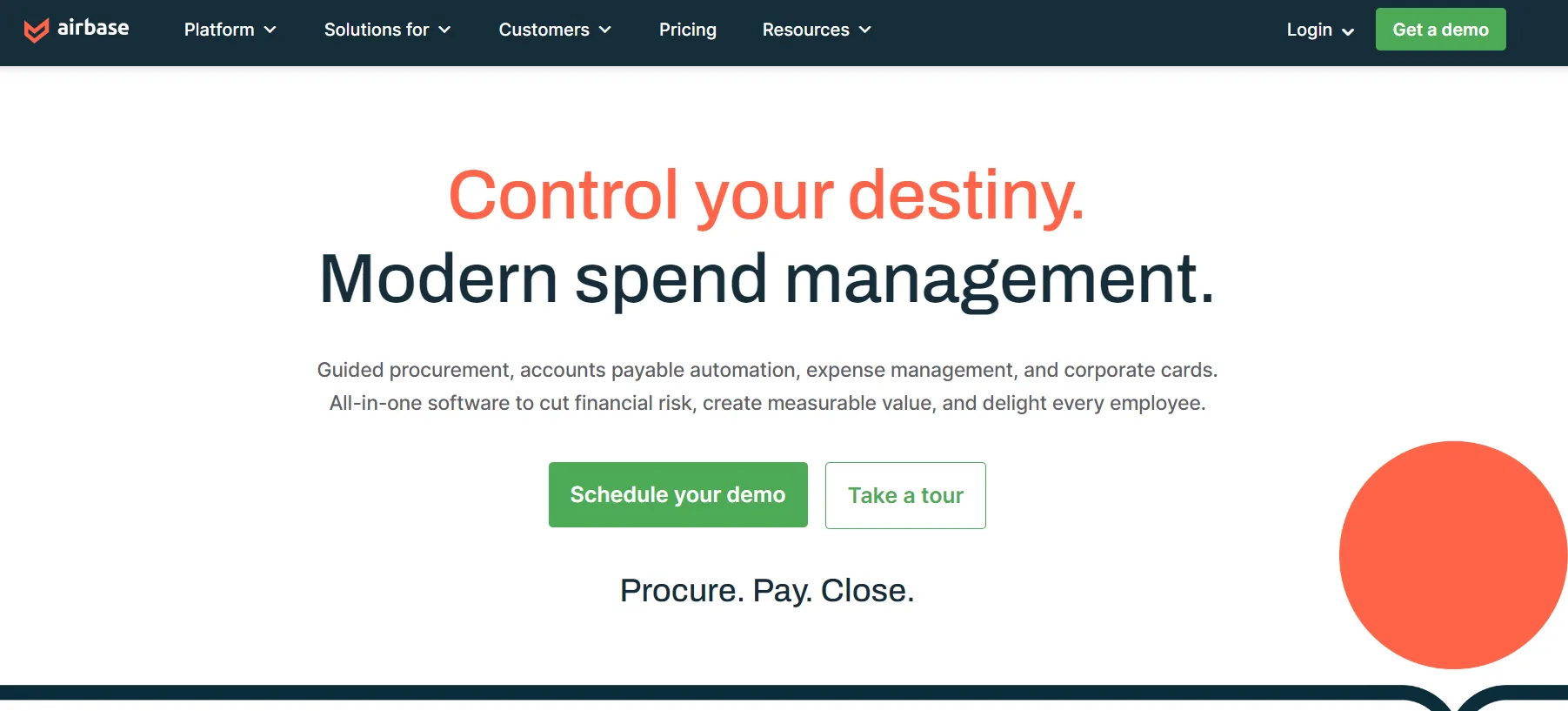
Airbase automates your spend management processes, enforces purchasing policies, and gains real-time access to their financial information. Furthermore, it offers a centralized platform for payment processing, expenditure management, and purchasing.
Additionally, employees can submit expenses straight from their mobile devices, and the platform automatically classifies and approves expenses in accordance with business policies.
Also, it enables users to process payments straight from the platform as it integrates with various payment providers.
Pros
- Airbase offers you expense tracking capabilities that accurately identify all SaaS expenses and categorize them, making it easier to monitor the overall spend
- It integrates with various payment methods, including PayPal and credit cards, making it convenient for you to make payments for regular IT operations. You no longer have to switch between different screens to manage your finances and can even track the purchases you make
Cons
- Its analytic feature is inefficient because it is unable to analyze the categories with high spending, making it challenging to determine the precise amount spent by each category
- The tool takes time to reflect the payments. If you make any purchases using a corporate credit card, the payment will appear after 1 business day. Due to this, the finance team may run into issues while preparing reports on expenses because it won't display the exact purchase date
Customer Rating
- G2: 4.8/5
- Capterra: 5/5
5. Productiv
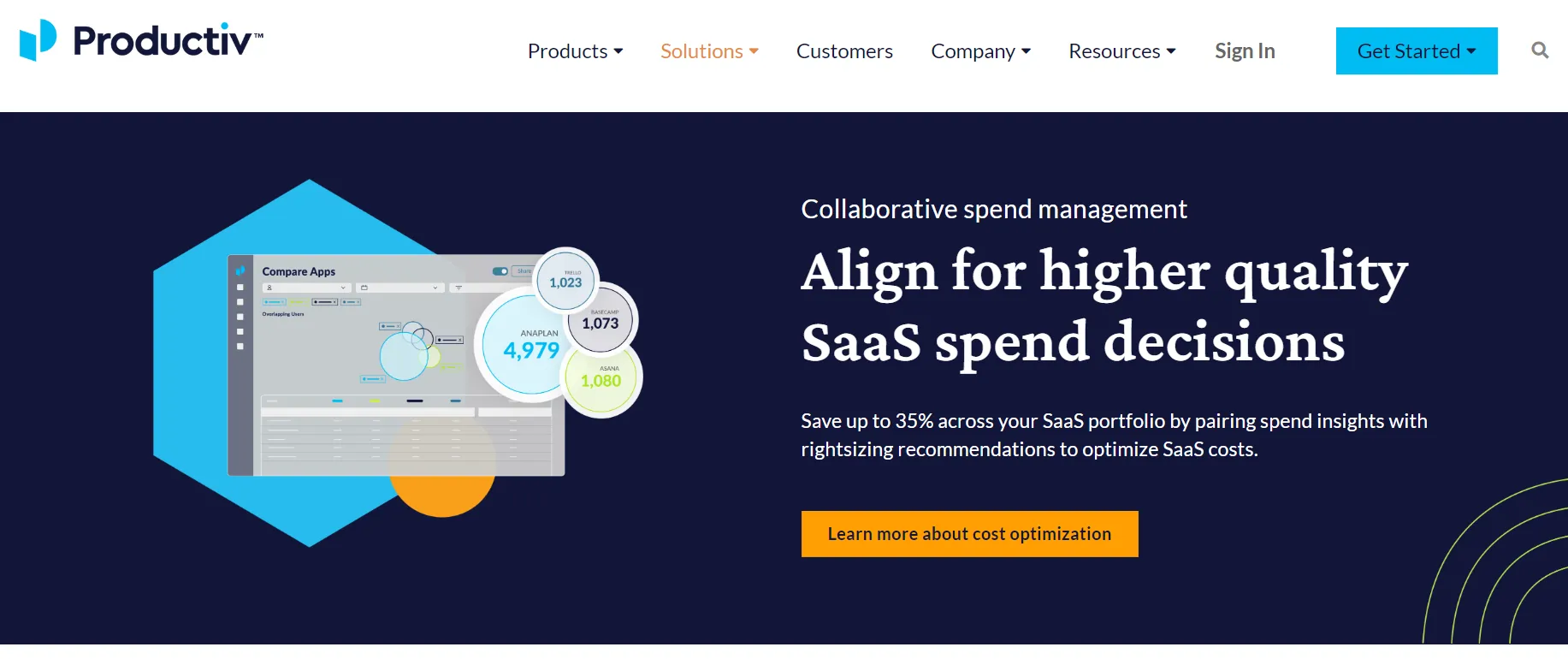
Productiv provides you with a holistic view of SaaS spend, helping IT admins understand the cost, usage, and value of the technology investments, making it easier to optimize spend and reduce waste. Furthermore, it tracks the usage of different software and technology assets, providing data-driven insights into which assets are being used effectively and which are not.
Additionally, with Productiv, you get automated recommendations and insights that help IT teams optimize the technology spend, and avoid license wastage and costly true-ups.
Pros
- With Productiv, you can track application metrics, owners, and security information, allowing you to make informed decisions based on the data on whether to continue with the application or not. This helps in reducing the SaaS expenses
- It provides recommendations to right-size to suitable tiers so that you don't pay for the features that you do not require
Cons
- Sometimes it fails to discover unknown applications, so the related expenses don't show in the system. Thus you have to manually check spreadsheets and spend statements to find unknown app data, consuming lots of productive time
Customer Rating
- G2: 4.7/5
- Capterra: 4.6/5
6. Zylo
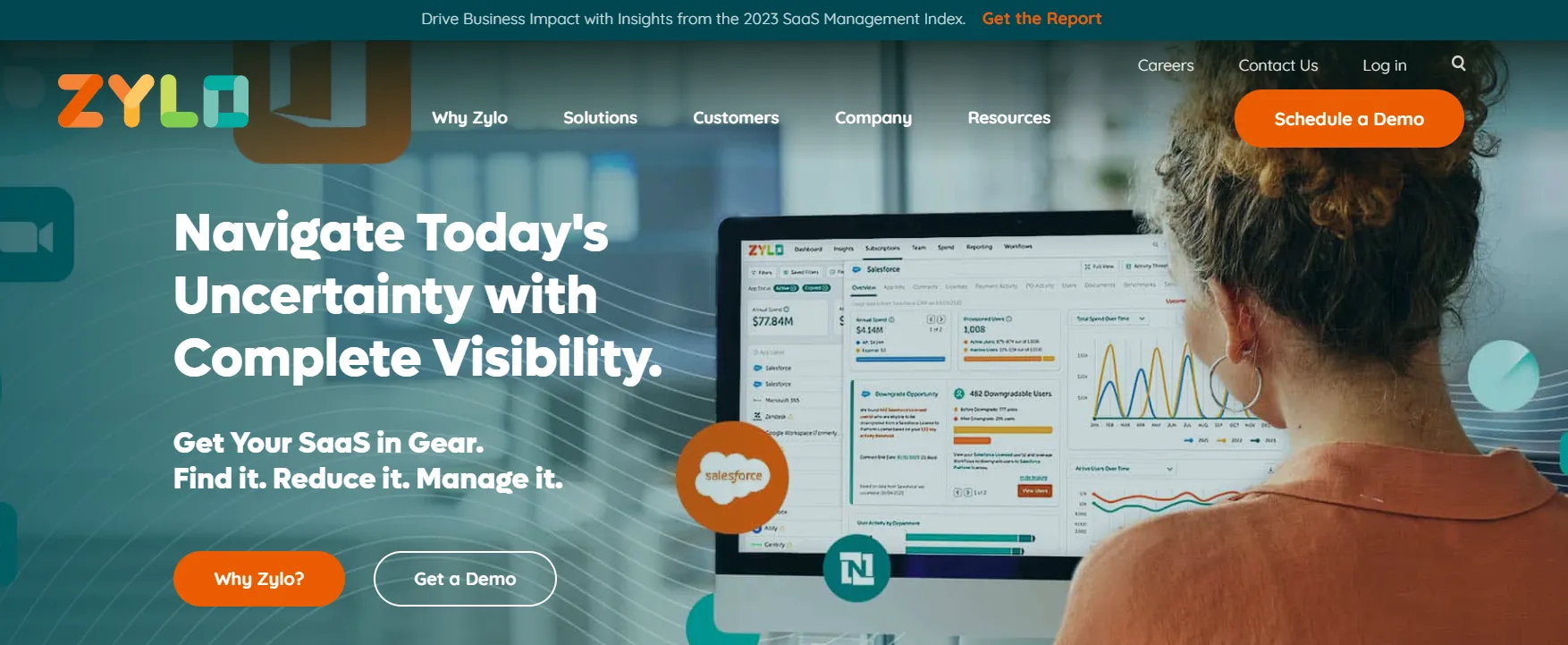
Zylo gives a thorough overview of a company's technology investments, including both employee-owned and purchased software. It assists in avoiding pointless purchases and aids in smarter SaaS purchasing selections.
Additionally, it assists IT admins in managing the software licences, assuring compliance and cutting down on over-licensing costs.
The platform additionally offers a centralized repository for software contracts, making monitoring important details like renewal dates and related costs simple.
Pros
- Zylo directly integrates with multiple applications, such as Okta and AzureAD, which helps provide valuable data about app usage. Based on this data, you can suspend the non-required apps, reducing the SaaS spend
- It conducts periodic audits and generates reports on SaaS licenses that are being used in the organization and how many are required, which helps you right-size licenses to suitable tiers
Cons
- It doesn't allow you to identify license costs per department, making it difficult for the finance team to find out which departments have spent the most on licenses
- Lack of integration with vendor risk management platforms, due to which the probability of users paying for the same application with similar functionalities is higher
Customer Rating
- G2: 4.7/5
- Capterra: 4.5/5
7. Spendesk

Spendesk helps IT admins manage expenses, automate workflows, and increase visibility into organizations' SaaS spend. The platform provides features such as virtual cards, real-time tracking of expenses, and an expense reporting system to help IT admins control spending and simplify financial management.
Furthermore, with Spendesk, IT admins can enforce spending policies, streamline reimbursement processes, and improve financial decision-making through enhanced data insights.
Pros
- For purchases made through online apps, you may quickly create recurring or one-time-use virtual cards, making it easier to keep track of all your purchases.
- Spendesk makes it simple to track application requirements, allowing you to reduce the number of unnecessary applications and make cost-saving decisions
Cons
- It doesn't provide you with any feature or option to track the team/department's overall budget, which makes it challenging to keep tabs on overall operations cost
- The spending or the history of the spending cannot be categorized by date, time, and custom tags. This makes it challenging for IT admins to see where and how much they spent, leading to ineffective SaaS spend monitoring
Customer Rating
- G2: 4.7/5
- Capterra: 4.8/5
8. Vendr

Vendr provides IT admins with expert buyers that assist with SaaS buying. They ensure that only the necessary tools are bought, preventing needless SaaS purchases and ensuring those tools adhere to compliance standards.
Additionally, Vendr's experts negotiate with the vendor on your behalf in order to secure the greatest deals. They acquire SaaS applications faster and for a lower cost.
Additionally, it performs timely audits, creates reports on subscription usage, and sends notifications to IT admins when subscriptions need to be renewed.
Pros
- Vendr experts negotiate contracts on your behalf, which helps you obtain better deals and also delivers valuable insights and analysis, enabling you to make effective cost-saving decisions
Cons
- The tool isn't efficient enough to generate effective reports, making it difficult for users to navigate the overall SaaS expense
- Inaccuracy in the sync information, can lead to miscommunication and can also impact cost-saving decision-making. For example, inaccurate data exchange between the finance and IT team can turn out to be a business loss
Customer Rating
- G2: 4.7/5


.webp)






.svg)





















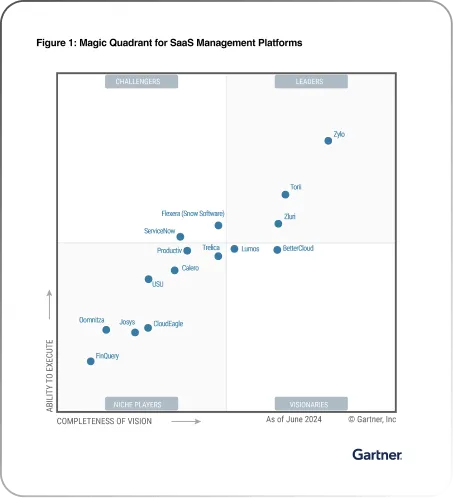







.webp)







.webp)
.webp)





.webp)